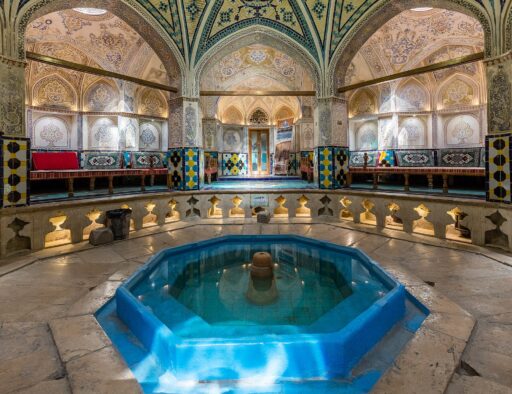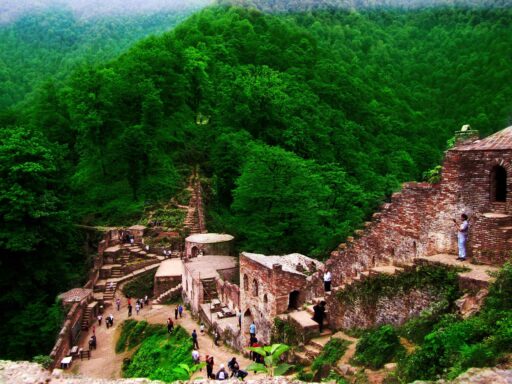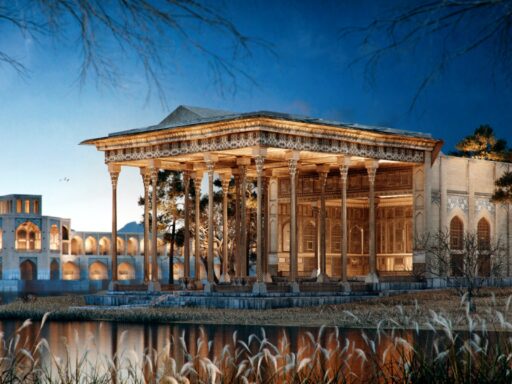Introduction
The Sultan Amir Ahmad Bathhouse is considered one of the finest examples of traditional Persian bathhouse architecture. Built in the 16th century, during the Safavid dynasty, this bathhouse is renowned for its intricate tilework, domed ceilings, and graceful arches. Located in the ancient city of Kashan, the bathhouse provides a glimpse into the bathing customs and architectural achievements of Persia’s past.
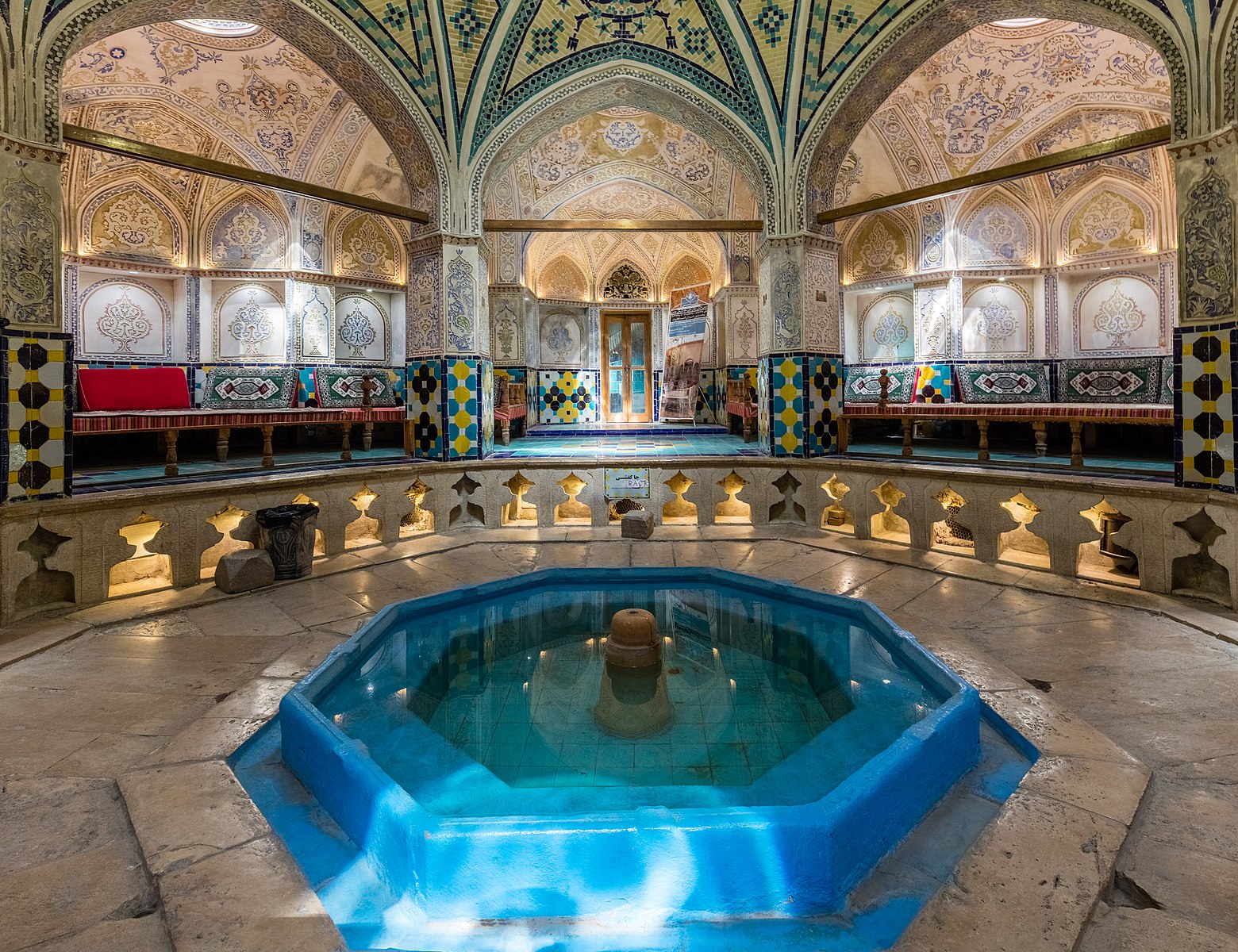
History and Patron
The construction of the Sultan Amir Ahmad Bathhouse began in 1580 under the patronage of Sultan Amir Ahmad, a wealthy governor of Kashan during the reign of Shah Abbas I. Some sources indicate that Sultan Amir Ahmad commissioned the bathhouse to serve as a public charity and enhance his reputation. Others suggest he built it as a source of income. Regardless, Sultan Amir Ahmad gathered the most talented architects and artisans to create an architectural masterpiece.
The bathhouse underwent restoration work in the 18th and 19th centuries. While some new decorative features were added, much of the original design has remained intact. The bathhouse continued operating until a few decades ago when public bathing fell out of fashion in Iran. It was restored again in the 1990s and opened as a museum and tourist attraction.
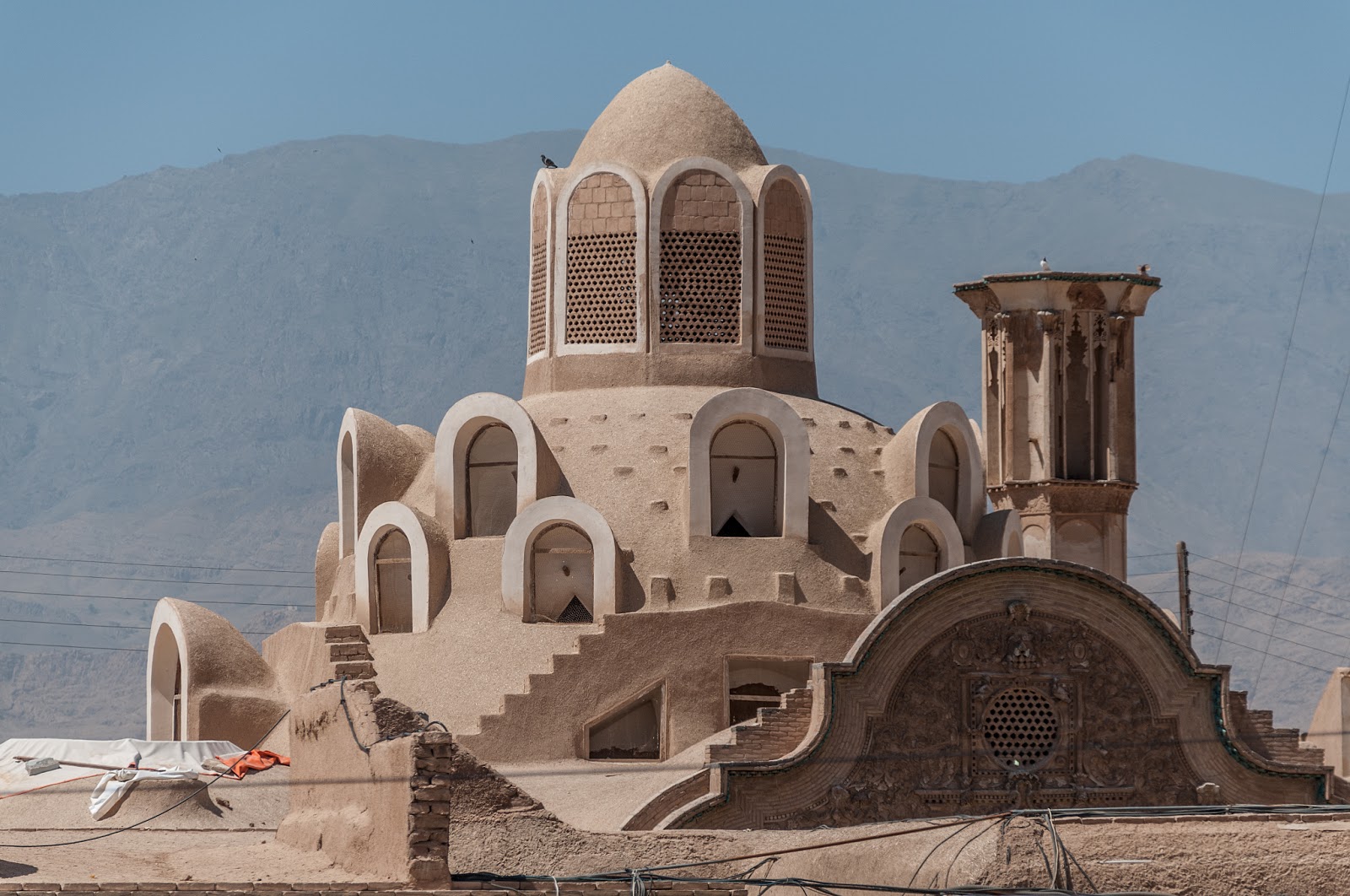
Architecture and Design
Covering an area of around 1000 square meters, the bathhouse represents a harmonious blend of architectural styles and design elements. The façade features a grand iwan, a vaulted hall opening onto a courtyard. Inside, the bathhouse contains a series of interconnected, domed halls aligned on a single axis.
The main dome sits above the central hall and boasts a height of around 17 meters. This space was used for gatherings, socializing, and changing. Flanking both sides of the central hall are smaller, private bathing chambers with plunge pools, fountains, and water channels. The chambers connect to intermediate rooms with heated platforms and dressing areas.

Intricate Tilework
What makes the Sultan Amir Ahmad Bathhouse truly exceptional is the intricate geometric tilework blanketing its interior. Nearly every surface has been decorated with mosaics, murals, and tiles of the finest quality. Bright cobalt blues, turquoises, and whites predominate, contrasted by touches of yellow and black.
The upper walls and dome interiors feature kaleidoscopic star-and-cross patterns created using the seven-color tile technique. Lower walls are adorned with intricate floral motifs and figurative scenes depicting bathing customs. Stylized Arabic calligraphy also features prominently throughout. In total, the bathhouse contains around 300,000 tiles.
This tilework represents the pinnacle of Persian aesthetic ideals. The harmonic colors, hypnotic patterns, and mathematical perfection of the motifs reflect a sophistication unique to Persian art. While the surfaces dazzle the eye, they also have functional purposes like waterproofing and light reflection.

Engineering and Sustainable Design
In addition to its beauty, the bathhouse exemplifies intelligent engineering. It has an effective system for circulating air and regulating temperatures in the different halls. The domed roofs allow steam to rise away from bathers, preventing condensation from damaging the tiles. The plunge pools stay heated using a hypocaust system of underground furnaces.
Water also flows in and out of the bathhouse in a sustainable loop. After being used in the plunge pools, it passes through a maze of underground clay pipes to the outside abanbar (cistern). This provides time for the water to cool before it can be drawn back into the bath’s supply.
The bathhouse was also strategically positioned. It sits near an ancient qanat, an underground aqueduct that draws fresh flowing water from the mountains. This provided an ample water source for hundreds of years.
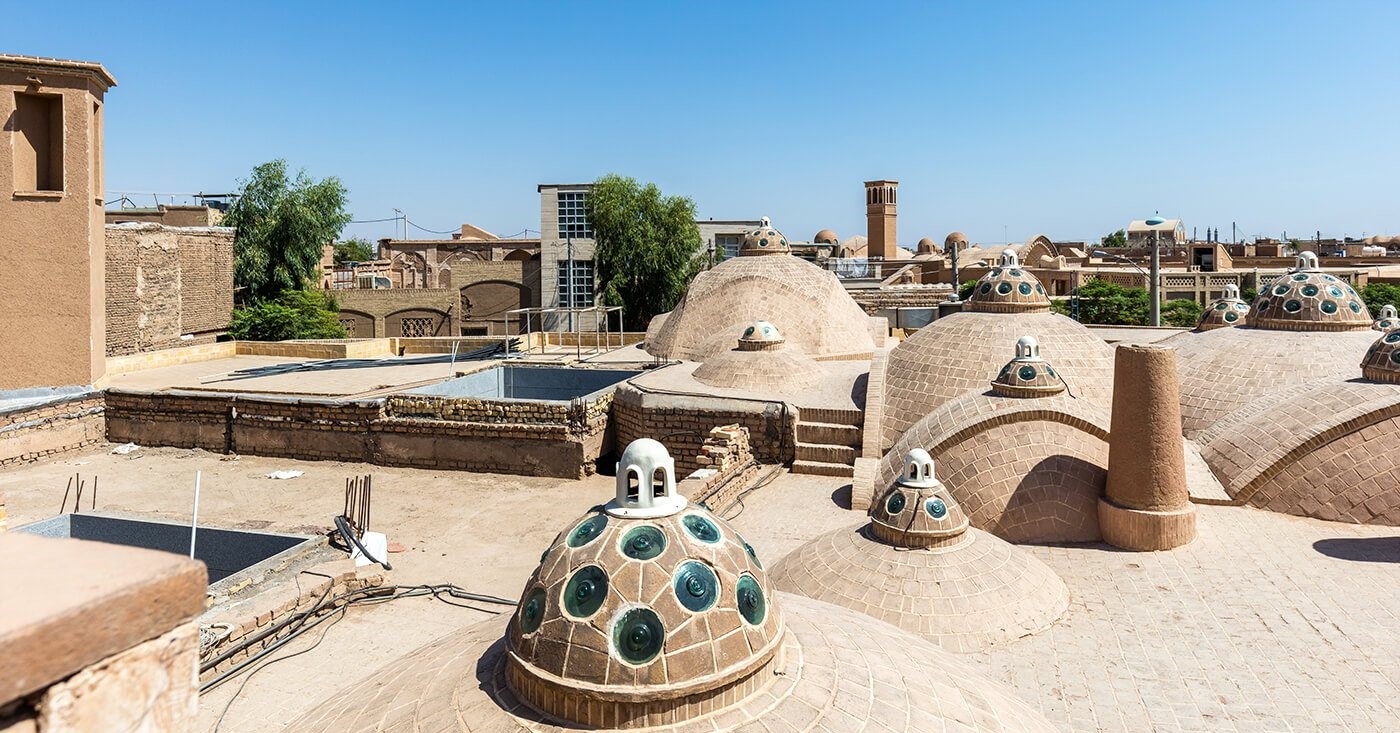
Cultural Significance
During its heyday, the Sultan Amir Ahmad Bathhouse served as a gathering place for all social classes in Kashan. People not only came to bathe but to socialize, dine, exchange news, and be entertained. The experience offered a communal purification, both physical and spiritual.
In the larger context of Persian history, the bathhouse represents the refinement and prosperity of 16th-century Persia under the Safavid Dynasty. This was a period when arts, architecture, poetry, and philosophy flourished across Iran. The sublime beauty of the bathhouse pays testament to the advanced civilization that created it.
While public bathing culture has faded in Iran, the bathhouse still holds meaning. It provides modern viewers an intimate glimpse into safavid-era Persia and the ideals that shaped its identity. The bathhouse also stands as a monument to Persian architectural and artistic genius, reflecting an ancient culture still worth celebrating.

Visiting the Sultan Amir Ahmad Bathhouse
Today, the Sultan Amir Ahmad Bathhouse operates as a museum open to visitors. It underwent extensive restoration work in the 1990s to conserve the intricate tilework and repair damage over centuries. While no longer functioning as a bath, visitors can wander through the elegant halls and admire the fine craftsmanship.
The bathhouse is located near the center of Kashan along Khayyam Street, a major tourist area. The opening hours are 9:00 AM to 9:30 PM in summer and 9:00 AM to 7:30 PM in winter. There is a small entrance fee. Guided tours are recommended to fully appreciate the history and architectural details.
For tourists, a visit to the bathhouse usually follows touring the Tabatabaei House next door. This 18th-century merchant residence showcases the Persian aesthetic ideals shared with the bathhouse. Visiting both allows an in-depth look at Safavid-era architecture and tilework.
No trip to the oasis city of Kashan is complete without seeing the Sultan Amir Ahmad Bathhouse, one of Iran’s most spectacular historic monuments. This bathhouse offers insight into the sophistication of traditional Persian culture through the lens of architecture and artistry. Even after five centuries, it still awes visitors with its scale, beauty, and attention to detail unmatched in the Islamic world


